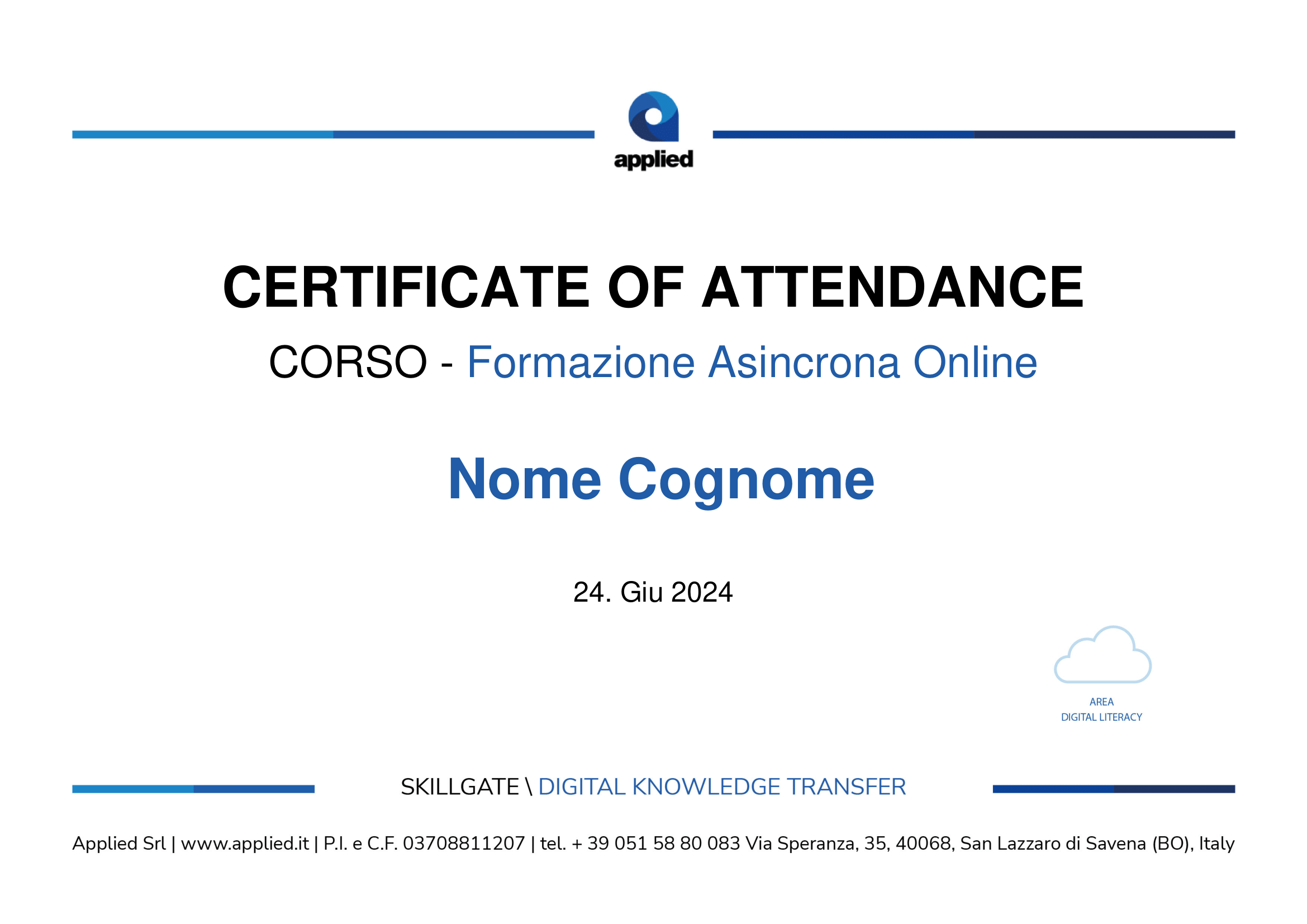Remote Working
The Smart Working course explores the evolution and implementation of agile working, analyzing the historical context, organizational structures, the role of people and managers, and enabling technological factors improving productivity and work-life balance.

Course description
The use of Remote Working takes strong impetus from the Covid impact19 with an abrupt change in working modes. The continuation of the state of emergency and the actual benefits (logistical, activity efficiency, environmental improvement, increased digitization, etc.) predict that the transitional adoption of SW, will, instead, prefigure as a point of no return in the way of organizing and managing a Business.
While the Remote Working Observatory has estimated the increase in people's productivity with agile work, many companies have highlighted major critical issues in managing the transition, which weaken the benefits of Remote Working in the absence of appropriate organizational and instrumental interventions starting with manager training.
Main topics:
- The rise of Remote Working and the phenomena that characterize it (Organization, Skills, Technology and Regulatory Framework)
- Remote Working perception in the market and in the company
- Remote Working charachteristics and some of its important applications
- The structural elements of smart working: organisation and processes, People and the role of the Manager
- The main enabling factors: technology
- Smart learning
- Remote Working and change management
- Actions to consolidate SW as an opportunity for the company and for people
- The tools for monitoring performance levels
Course goals
Basic Concepts
Becoming aware of the changing context and influence on agile working
Agile Working in the Company
Understanding the structural requirements and enabling factors for the activation of a smart working model adapted to different company contexts
Adaptation to change
Opening up reflections on how structural requirements and enabling factors are to be managed in a context of flexibility and continuous change
Methodology and Technology
Learning about and knowing how to use the tools and methods needed to implement smart working
This course includes
-
Examples of real business cases
-
Course completion certificate
-
Downloadable in-depth content
-
Help desk support
-
Access from mobile and tablet
-
Comprehensive monitoring of educational progress
-
Skills assessment test (mandatory)
-
Skills assessment test (mandatory)
Course completion certificate
After completing the course it is possible to obtain a downloadable certificate to display as evidence of the skills achieved. The certification can be combined according to company needs.


Course's lecturer
Germano Mazzetti
- Organisation Specialist
Course's contents
- Chapter objectives
- Work evolution
- Smart working definition
- Smart working objectives
- Factors influencing the design of Smart Working
- chapter objectives
- Smart Working context
- Evolution and Statistics of Smart Working
- Advantages and critical issues in the implementation of the SW model
- Smart Working regulation - Overview
- Chapter objectives
- Size of the company system
- Organization
- Processes
- From the vision to the ideal optimal operating model
- Smart working requirements
- chapter objectives
- The Person: motivation and skills
- the person and the organization
- the person and smart working
- chapter objectives
- importance of the Manager's role in the adoption of Smart Working
- main problems in managing employees in Smart Working
- Manager's levers to direct and manage employees in Smart Working
- Goal setting and the exercise of delegation
- planning activities in relation to objectives
- Methods for monitoring activities and controlling results
- The evaluation of employees in Smart Working for the development of professionalism
- Chapter objectives
- The technological lever in Smart Working
- SW devices and applications
- SW security
- Strategies for SW security
- the human factor
- A case study: the problem of information coverage of processes and remote access to data
- Smart learning objectives
- Why choosing smart learning
- What is smart learning
- Smart learning digital tools
- What are the differences and advantages between traditional training and Smart Learning
- training design in the Smart Learning mode
- the function manager's role in Smart Learning training
- Smart working and change management
- Meaning of change management
- risks of change: defensive mechanisms
- change management
- A methodology for managing change management effectively
Entry requirements
Access to any browser
PC / Tablet / Smartphone device
Internet connection
All Mindset enabling area courses
-
M03Open Innovation
